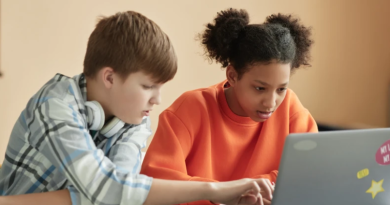6 blended teaching tips learned the hard way
Teachers around the world are grappling with blended learning – here one share the benefit of his experience
“Any questions?”
I scan the room of masked faces and socially distanced individual desks. Then my eyes go next to my monitor, where I see a hand emoji from a student in China.
She is attending the lesson online, as are around 25 percent of our students since our reopening this September. Some online students are based internationally, but most are attending from their homes in-country.
Most international private schools in Dubai offer blended learning for students or parents who have concerns about returning to the classroom or who are stranded in their home countries because of travel restrictions.
Coronavirus: How schools can deliver blended learning
Given the unpredictability of the pandemic, here are six tips for teachers who may be in a similar situation soon.
1. Connect your students
While it is easy to engage with students in the class, connecting with your online students can be challenging.
Studies have shown that online students can feel like they are a burden to teachers, so ensure this isn’t the case by staying aware of their presence and responding to them with the same urgency.
I like to swap between an online student and an in-class student when questioning or taking responses. When using Microsoft Teams, I open all lesson content through the app so that online participants remain visible to the right of my screen.
If this isn’t possible, and for some reason, I’m averted from my screen, I give online students permission to interrupt me if they are left waiting.
Their interpretation of a reasonable amount of time for this can vary.
2. Establish blended class routines
Just as you would outline your expectations for behavior and interaction in your physical classroom, you must also establish such routines for your blended classroom.
In order to avoid creating a divide between in-class and online students, these routines should be consistent for both where possible.
Ensure that online students are present before you greet your class and ask how their weekend was. If you use a “hands-up” policy for contributing to discussion, encourage your online students to do so digitally.
Online platforms such as Zoom and Microsoft Teams allow for this and, when projected on to the screen, allow students to present and online to navigate a discussion smoothly.
3. Continue to collaborate
Physical distance does not have to be a barrier to collaboration or peer feedback in your blended class.
Websites like Padlet.com allow students to simultaneously add comments, images, drawings, or links to a shared digital space.
Microsoft Class OneNote also includes a “collaboration space” within which students can share and edit work in real-time.
If you feel especially confident in your skills as a conductor, you can orchestrate a class discussion on your video-calling application of choice.
However, this will require clear instruction of who can speak and whose microphone or speakers are muted. Get this wrong, and your symphony could become a soprano.
4. Check the tech
Your choice of technology may be dictated by the system your school uses, such as Microsoft Office 365, in my case.
This means that our emails, cloud storage, and video calls are all centralized, and students have access via their school email accounts.
However, before utilizing other technology, websites, or applications in your lessons, check data, and privacy policies.
There are a lot of commercial tech companies offering “free” digital resources to teachers in need. Before signing your students up to any of these, ensure you are clear on what information will be provided and how it will be used.
Also, ensure that free sign-ups remain free and that previously-stored work does not become unavailable following the initial trial.
5. Prepare Plan B
With more technology required, there is more room for something (or many things) to go wrong.
I have already lost one or two lessons on a stubborn computer. You can prepare for such obstacles by uploading your lesson content in advance.
Instruct students to begin working on the tasks if you do not join the call after 10 minutes. This will allow you time to work on fixing the issue.
Also, carrying a device or smartphone with the apps installed will allow you to communicate with your online students during these periods of blended crisis.
6. Reduce screen time
In a school day conducted entirely online, it is vital to encourage your students to take breaks from the screen.
These can be subject-related if you like. I ask my students to bring a book to read for the first five to 10 minutes of each lesson.
This gives their eyes a welcome rest but also allows me time to set up the video call. Other options that don’t break social distancing guidance include armchair exercises, stretching, or short meditation sessions.
Tutorials on how to conduct these sessions are easily accessible on YouTube.
Overall, blended learning comes with new challenges for teachers, but with flexibility and adaptability, you can navigate the complications of a blended classroom. If all else fails, you can always try turning it off and on again.
Source: https://www.tes.com/news/blended-learning-tips-ideas-remote-teaching




